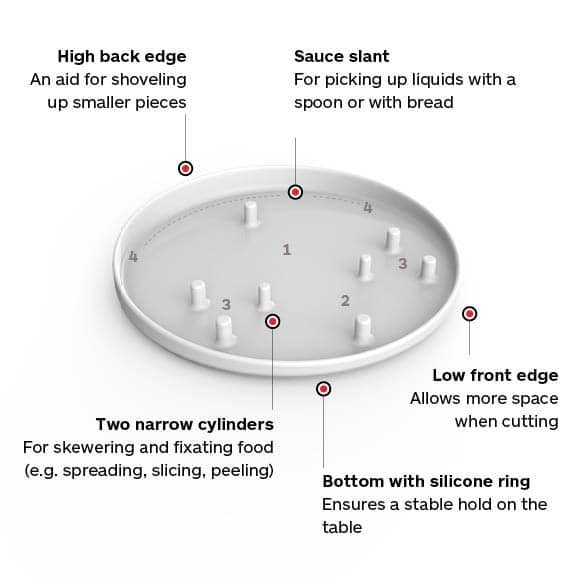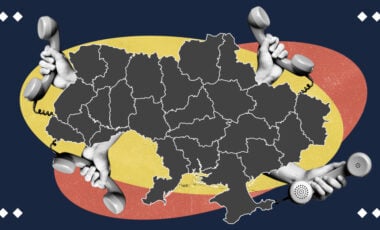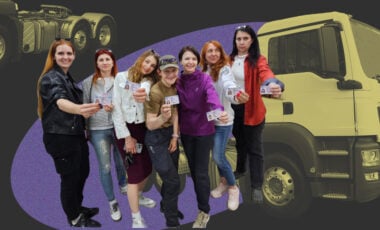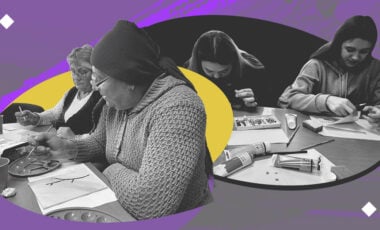Solutions from Ukraine: ceramic artist designs one-handed plates for easier dining experience

Photo: The Village
Ceramic artist Viktoriia Beliavska designed one-handed plates for diners who eat with only one hand. These unique plates were created for Naushi, a ramen restaurant located in Kyiv.
The Village reports this.
What is the problem?
The ongoing war in Ukraine has had a profound impact on the physical and mental health of its citizens. The number of people with limited abilities has significantly increased as a result of injuries sustained during the Russian invasion. These individuals face daily challenges in navigating their surroundings and society as a whole.
In such difficult times, Ukrainian society must make efforts to create a more inclusive and accessible environment for people with disabilities. This includes adapting public spaces, infrastructure, and even everyday items like pottery for one-handed individuals.
What is the solution?
Viktoriia Beliavska, a skilled craftsman, creates pottery dishes and sculptures using clay. She is the creator of the one-handed plate, the first of its kind in Ukraine, designed for individuals who eat with only one hand.
A PR manager from the Kyiv ramen restaurant Naushi saw a video review of plates by Vlad Khilchenko, a former athlete and popular YouTuber known for her channel "One Right." After watching the review, she reached out to Viktoriia.
"They contacted me, inquiring whether I could create a customized plate for individuals with one arm. And thus, the puzzle was finished," the ceramist added.

Photo: The Village
How did the concept of producing these plates in Ukraine originate?
Viktoriia herself mentioned that she came across these dishes on American YouTube. The idea of creating specialized plates originated in the mid-20th century to assist Second World War veterans. During that era, a team of engineers, designers, and occupational therapists collaborated on the design of one-handed plates.

Photo: The Village
The earliest version of this plate was believed to be invented by the German company Kettner, which was later named after its creator. The designer, Kettner, created a unique dish for her husband, who had limited hand mobility due to an injury. One side of the plate was raised to make it easier for him to gather food.

Photo: The Village
How long does it take to create a plate?
Generally, it is difficult to say how long it takes to make a plate.
"One day, I sculpted the shape and cleaned it thoroughly. After that, I let the plates dry for 5-7 days before sending them to a specialized muffle furnace for firing, which takes 16-20 hours," Viktoriia said.
Then, the plates should be covered with glaze and baked again.

Photo: The Village
The workshop has a small oven so that one can bake up to eight plates at a time.
"I always tell customers that the production period is 14 working days. But on the condition that there are no power outages," Viktoriia noted.

Photo: The Village
How does it work?
The plates have special pins placed at varying distances.
"This way, food "runs" less on the plate, so a person does not have to spend effort on simple dishes," Viktoriia explained.
Any product can be placed between the pins and cut. For example, in the widest part of the plate, one can fix a piece of meat, a sandwich, or scrambled eggs and cut tomatoes or other vegetables into smaller, "triangular" cells.
The raised rim effectively catches small food pieces. Additionally, there's a designated spot on the plate for spooning up sauce.

Photo: The Village
The front of the plate is slightly lower, making it more convenient for cutting food.
Furthermore, silicone mats or legs are necessary to prevent the dishes from sliding on the table.
Nobody has tried out the plates yet, even though Viktoriia has already handed some over for use in Naushi's ramen. The chefs are preparing some dishes from the menu that can be served on those plates, as the establishment's team shared.
Viktoriia has also begun producing fresh plates for the Trypichcha restaurant in Kharkiv. The Lviv coffee shop is currently finalizing its preferred color. The artisan will supply another batch to the military hospital in a few weeks.
Individual plates can also be purchased. The artisan is offering to support the initiative by funding the cost of plates specifically for military and veterans. Nine plates have already been purchased through donations from Ukrainians. You can also participate in the initiative by buying a plate for 700 hryvnias. However, please note that these plates are still in the testing and development phase, with alterations and improvements for better usability.






















































